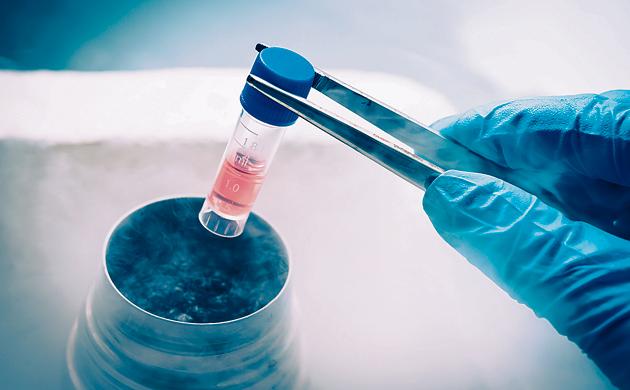Stem cells have shown a lot of potential in therapeutics. Thanks to their immunogenic reactivity, high proliferative capacity, and differentiating capabilities. They are the basic building blocks of our bodies. And because they are undifferentiated cells and have the potential to be developed into cells like blood cells and brain cells.
In science and medicine, stem cells are important because they can be used to repair or replace the cells damaged by aging, illness, and injuries. The challenge is where to get these stem cells. Years from now, stem cell banking will be the norm.
Table of Contents
But what is stem cell banking, and how can it help save lives?
This and all other questions about stem cell banking, its pros, and cons, will be answered here. Read this article if you want to know more about Bangkok stem cell banking.
What is Stem Cell Banking?
As the term suggests, stem cell banking is the process of extracting, processing, and preserving stem cells for its use in the future. Most people are more familiar with cord blood banking, which is the same as stem cell banking.
In cord blood banking, the stem cells are extracted from the cord blood and freeze for future use. The cord blood or umbilical cord blood is the blood that is left on the umbilical cord and placenta after delivery.
The main reason why experts in stem cells recommend banking of umbilical cord blood and fluid stem cells is because these fluids are rich in stem cells. These stem cells are vital because they can be used in treating many chronic diseases that were incurable years ago. Included in these diseases are cancer and diseases of the blood and the immune system.
The cure for these diseases is important because they can affect the body’s capacity from defending itself against damages and injuries, leading to a degenerative process to the rest of the systems in the body.
Stem Cell Banks
With such progress in stem cell research and development, experts have established different types of stem cell banks. It includes the public cord banks, private coded banks, and direct-donation banks.
Amongst the three, the public stem cell banks offer a huge advantage because they don’t charge anything for storage and only work on donations. However, there is also a disadvantage because the stem cells stored in their facilities can be used by anybody as long as it is compatible. Also, the stem cells stored in public stem cell banks are accessible to experts and can be used for research purposes.
Private stem cell banks or commercial stem cell banks. The advantage that these stem cell banks offer is they will receive and store the stem cells for use only by the donor or the family members that need them. It is expensive and not everyone can have access to these banks.
The last option you will have to process and bank your stem cells is through direct-donation stem cell banks. It is a cross between a public and private stem cell bank. It can receive stem cells that can be used by everyone. They can also receive stem cells that will be reserved exclusively for specific members of the family without fees.
Cord tissue, umbilical cord blood, and dental tooth pulp are rich sources. The widely used source at present is cord blood stem cells used in transplants and therapies to treat over 85 kinds of diseases including leukemia, anemias, lymphoma, and bone marrow cancer.
Stem cell banking offers us an opportunity to store stem cells cryogenically for over 25 years and it will be ready any time you may need them. The process of extracting stem cells is invasive, safe, and risk-free.
The Advantages of Stem Cell Banking
The importance of cord stem cell banking is that the stem cells harvested from the amniotic fluid contain ten times more than those harvested from bone marrow aspiration. This is critical because some diseases may require a huge amount of stem cells and the amount that would be taken from bone marrow aspiration.
Another advantage of cord blood and amniotic fluid stem cell banking is that these stem cells rarely carry any diseases. Therefore, it is less prone to rejection by the body as compared to adult stem cells.
Extracting stem cells from cord blood is also very easy. The doctor will clamp and cut the umbilical cord as he normally would. The umbilical cord will be processed in a specialized laboratory and store. Since the blood is obtained from the cord, the procedure is painless and non-invasive and will not harm the mother or the baby.
The Disadvantages of Stem Cell Banking
Though stem cells are very useful in the treatment of various diseases, there could be some disadvantages too.
For instance, cord blood may not contain as many stem cells as required in the medical procedure. It means that when an adult needs a transplant, they have to get stem cells from multiple donors.
Aside from that, those who want to store their stem cells privately will have to pay a substantial amount to store them. Even if you want to store stem cells in a public stem cell bank, you have to pay a small fee for its collection at the hospital and not all hospitals can have this service.
Conclusion
Stem cell banking can have many benefits, especially in the treatment of future diseases. However, the process is still controversial. No one knows at this point up to what extent the stem cells are going to be used.
The possibilities are endless for stem cells and it is possible that restoring the stem cells now will be useful one day. Talk to your doctor to help you make a qualified decision and choose the best Bangkok stem cell banking facility for you and your family’s needs.





